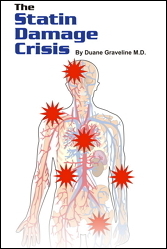Kilmer McCully, M.D. - Homocysteine - Part 1 of 2
 By Kilmer McCully, M.D.
By Kilmer McCully, M.D.
Homocysteine is an amino acid that is important in sulfur metabolism, as discovered by the prominent American biochemist Vincent DuVigneaud in 1932. He discovered that this amino acid has one more carbon atom than cysteine, an important constituent of all proteins, and gave it the name "homocysteine" [homo = same in Greek].
An amino acid called "cystic oxide" was discovered by Wollaston in 1810 by isolation from bladder stones, and was later shown to contain nitrogen by Berzelius in 1833, hence the name cystine [kystis = bladder in Greek]. In working with homocysteine and the amino acid methionine, DuVigneaud discovered its importance in supporting growth of animals lacking methionine by chemical transformations in the body called transmethylation.
Little was known about the significance of homocysteine in human disease until 1962, when cases of the new disease homocystinuria were discovered among children with mental retardation, dislocated ocular lenses, accelerated growth, osteoporosis and a tendency to form blood clots in arteries and veins.
I became interested in the possible connection between homocysteine and arteriosclerosis in 1968 through review of a case of homocystinuria from 1933 that was discovered by pediatricians at Massachusetts General Hospital. This archival case was the uncle of a 9-year-old girl with mental retardation, dislocated lenses, and abnormal blood vessels of the skin who was diagnosed in 1965 by the new Amino Acid Laboratory directed by Mary Efron and Vivian Shih.
As reported in the New England Journal of Medicine, the boy from 1933 died of thrombosis of the carotid artery and a massive stroke, and the pathologist Tracey Mallory found that the arteries were narrowed by arteriosclerosis "similar to changes found in a very elderly man."
Because of an interest in amino acid metabolism and experience with the biochemistry of methionine and homocysteine at the National Institutes of Health, I read the pertinent literature on this new disease, confirmed the presence of arteriosclerosis in slides surviving from the 1933 case, and found plaques scattered through the arteries of this child.
By chance I was able to study the case of a 2-month-old baby boy who had recently died of the new disease, cobalamin C disease, characterized by excretion of homocysteine, cystathionine, and methyl malonic acid in the urine. Realizing that this case could shed light on the possible connection between homocysteine and arteriosclerosis, I restudied the tissues of this new case and discovered astonishingly advanced changes of rapidly progressive arteriosclerosis.
Since the enzyme deficiency and the pattern of abnormal metabolism were different from the archival case from 1933, I concluded that the amino acid homocysteine produced arteriosclerosis in these children by a direct effect on the cells and tissues of the arteries. There was no evidence that lipids are deposited in the arteries of these children, and no cholesterol was found in the arterial plaques.
In experiments with rabbits utilizing a similar approach to that of Ignatowsky and Anitschkow more than a half century earlier, my research group at Massachusetts General Hospital discovered that administration of the pure amino acid homocysteine to these animals produced arterial plaques and thrombosis of veins and arteries. Simultaneously giving pyridoxine ( vitamin B6 ) to the animals prevents the plaques and thrombosis.
Although I did not know it at the time these experiments were completed in 1975, Fumio Kuzuya in Japan repeated our experiments and observed essentially the same results in the late 1970s, reporting his reports in Japanese articles. These results were also observed by Harker and Ross in Seattle, utilizing intravenous administration to baboons.
Thus these animal experiments led to the formulation of the homocysteine theory of arteriosclerosis in 1975. This theory helped to explain several important previous observations of experimental plaques in monkeys deprived of vitamin B6, animals made hypothyroid by thiouracil, and animals deprived of choline and other methyl donor nutrients.
Kilmer S. McCully, M.D.
Chief, Pathology and Laboratory Medicine Service
West Roxbury Veterans Affairs Medical Center






